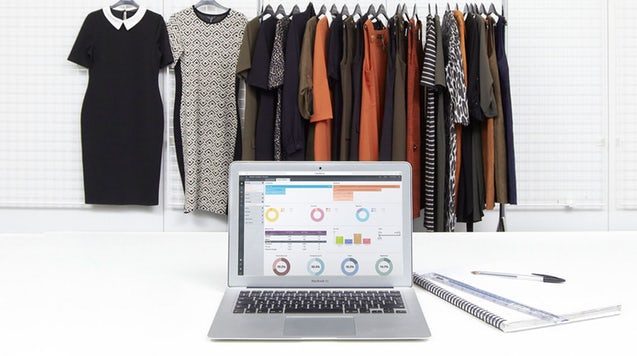The artificial intelligence revolution has arrived and it should not worry anyone. AI is changing jobs (not replacing them) and augmenting human tasks in consumer goods, manufacturing, customer service and many more verticals. In retail and fashion, the biggest opportunities are in trend forecasting and better supply chain management.
copyright by www.businessoffashion.com
 It’s true that IT and customer service have been the first areas to see real change from the application of artificial intelligence to trim costs and increase efficiency. Last year, however, a number of brands, including the direct-to-consumer label Everlane , backed off after adopting AI-powered chatbots, because customers found them frustrating to use.
It’s true that IT and customer service have been the first areas to see real change from the application of artificial intelligence to trim costs and increase efficiency. Last year, however, a number of brands, including the direct-to-consumer label Everlane , backed off after adopting AI-powered chatbots, because customers found them frustrating to use.
AI offers tremendous possibilities to better serve customers and drive profits for fashion, but it’s important not to jump in too early in an area like customer service, which could very well be the thing that saves fashion brands and retailers from the onslaught of Amazon and Baidu.
But success for brick-and-mortar stores now depends on how sales events are orchestrated and managed — and that means accurately predicting discounts to drive in-store shoppers. This is just one area where AI can shine: not only optimising markdowns, but also determining the geographic allocation of stock, taking into account distribution and the supply chain.
Behind many fashion brands is a highly complex supply chain. The infamously fast-to-fabricate H&M hit a drop in sales last quarter, and told shareholders that it was sitting on $4.3 billion in unsold merchandise. This is a problem that AI can solve.
With AI-empowered decision making, large amounts of surplus product need not happen again.
You see, in supply chain management, the brands learn by doing and processes improve over time. The thing you don’t want is to lose retained knowledge within the organisation and have to build again from the ground up. Fashion planners calculate steps and procurement follows cycles from past experience. This is also true for the people who have designed the supply chain.
By adding AI, a brand can retain knowledge of sales trends (assuming software already tracks which products sell, which don’t, and how they’re priced) to more effectively automate forecasting. Fashion is a dynamic and competitive environment, but with AI-empowered decision making, large amounts of surplus product need not happen again. […]
Thank you for reading this post, don't forget to subscribe to our AI NAVIGATOR!
read more – copyright by www.businessoffashion.com


The artificial intelligence revolution has arrived and it should not worry anyone. AI is changing jobs (not replacing them) and augmenting human tasks in consumer goods, manufacturing, customer service and many more verticals. In retail and fashion, the biggest opportunities are in trend forecasting and better supply chain management.
copyright by www.businessoffashion.com
AI offers tremendous possibilities to better serve customers and drive profits for fashion, but it’s important not to jump in too early in an area like customer service, which could very well be the thing that saves fashion brands and retailers from the onslaught of Amazon and Baidu.
But success for brick-and-mortar stores now depends on how sales events are orchestrated and managed — and that means accurately predicting discounts to drive in-store shoppers. This is just one area where AI can shine: not only optimising markdowns, but also determining the geographic allocation of stock, taking into account distribution and the supply chain.
Behind many fashion brands is a highly complex supply chain. The infamously fast-to-fabricate H&M hit a drop in sales last quarter, and told shareholders that it was sitting on $4.3 billion in unsold merchandise. This is a problem that AI can solve.
With AI-empowered decision making, large amounts of surplus product need not happen again.
You see, in supply chain management, the brands learn by doing and processes improve over time. The thing you don’t want is to lose retained knowledge within the organisation and have to build again from the ground up. Fashion planners calculate steps and procurement follows cycles from past experience. This is also true for the people who have designed the supply chain.
By adding AI, a brand can retain knowledge of sales trends (assuming software already tracks which products sell, which don’t, and how they’re priced) to more effectively automate forecasting. Fashion is a dynamic and competitive environment, but with AI-empowered decision making, large amounts of surplus product need not happen again. […]
Thank you for reading this post, don't forget to subscribe to our AI NAVIGATOR!
read more – copyright by www.businessoffashion.com
Share this: